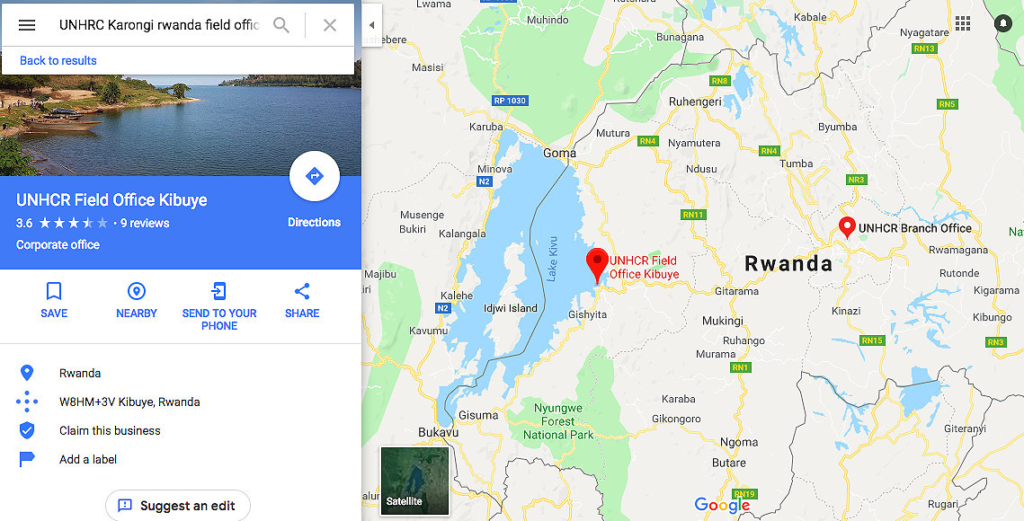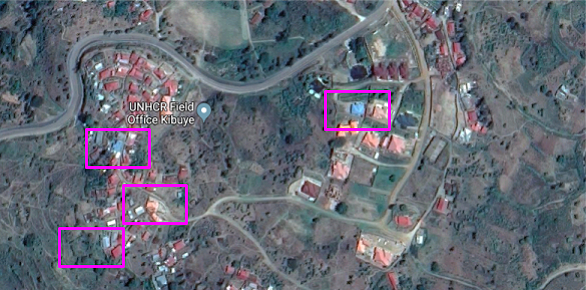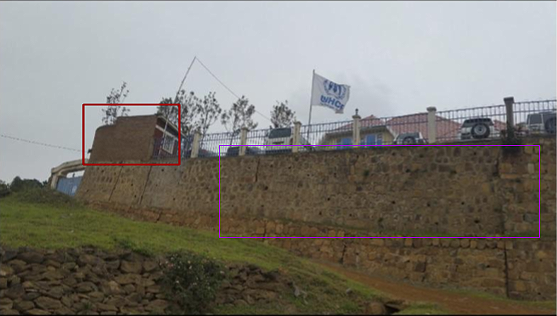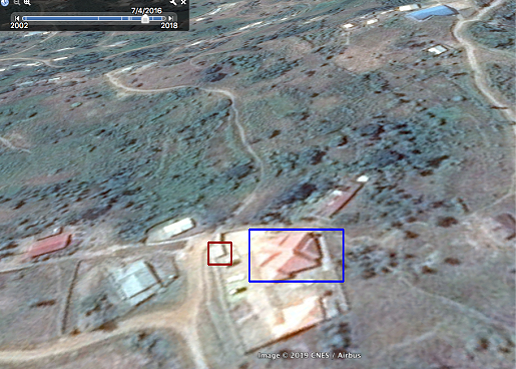This blog post is written by Dominique Lewis, who co-led this project at the University of California Berkeley Human Rights Center’s Investigation Lab on the Digital Verification Corps team. Dominique reports on the various methods and techniques that her team members used while investigating these human rights violations.
Description of the events
From 20 to 22 February 2018, hundreds of Congolese refugees protested outside the UN Refugee Agency’s (UNHCR) field office in Karongi, western Rwanda, about dwindling food rations amid cuts to humanitarian assistance at Kiziba refugee camp. The cuts at the camp, which houses roughly 17,000 Congolese refugees, were the result of donor states underfunding operations.
On the road to the protest, two or three protesters (accounts differ) were injured when soldiers fired live ammunition towards the crowd.
On the third day of protests, the Rwanda National Police fired teargas at the crowd after a final warning requesting the protesters to disperse. Minutes afterwards, with teargas still in the air, they opened fire, leaving at least eight refugees dead and many others injured. The same day, police shot three refugees dead back in Kiziba camp.
Further clashes between police and refugees during police operations in Kiziba camp in April and May 2018 resulted in at least 14 injuries and one death.
Verification methods
The Digital Verification Corps hub at UC, Berkeley assisted Amnesty International researchers to verify various incidents in western Rwanda through videos found on YouTube and circulated via WhatsApp. After watching all of the videos that were provided, we realized that some of the footage showed similar people and scenes. Rather than working to individually verify each video, team members collaboratively produced innovative ways to verify when and where the videos were captured.
When
Our first step to verifying the videos that were provided to use was to ensure that they were all taken at similar times. Several videos were uploaded to YouTube, so we plugged in each link through the Amnesty International Youtube DataViewer. The tool informed us that while there was no information about the exact date and time the videos were filmed, they were all uploaded onto the YouTube accounts on 21 February 2018. This date matched up with the time period that the events were reported on by UNHCR and by a credible news source – VOA Africa. As the videos were uploaded the morning of 21 February (UTC time), we concluded they likely showed events that took place a day earlier.
Where
The next step was to confirm where the events took place. As we had realized that the videos showed similar features, we interrogated the videos together as a collection in order to determine the location.
A UNHCR press statement released on 23 February mentioned that protests took place outside their field office in Karongi. We used searched “UNHCR Karongi Rwanda field office” in Google Maps to pin down the exact location of where the protests could have taken place.

In one of the videos, we noticed a blue roof near a body of water (image 1 below). This blue roof stood out from all the other red or beige roofs in the area. Thus, through looking on Google Maps, we eventually discovered several blue roofs near red or beige roofs around the field office location (image 2).


When searching for a location in Google Earth and Google Maps photos of the location are often provided alongside the search results. Google Earth provided attached images for certain locations in the Karongi area, and one of the resulting images showed a blue roof in the background (image 4). It additionally showed a small island, as in the background of the video. This image became relevant because a similar small island could be seen in the background of one of the other videos (image 5).

While looking through the videos, we realized that the videos were either shaky or moving too quickly for us to look for geographic features. Thus, we created a panoramic image from screengrabs from one of the videos (image 6). In this panorama, we found the small island in the background from a similar angle as the Google Maps image (image 4).

Additionally, when trying to determine the location of the blue roof, we came across other Google Map Images. One showed a structure on top of a stone wall and at the end of a fence (image 7). The same stone wall and raised guard post at the end of a fence is also visible in the panorama image from the video (image 6).


We circled back to the Google Maps image (image 4) that we found when searching for the blue roof, which was located at -2.073338, 29.336184. With that location, we looked for a squarish red/brown structure at an end of a fence. When we couldn’t find a structure at the end of a fence in that proposed area, we used the Google EarthPro historical imagery function to show satellite imagery of that area captured at different dates. This is frequently used to show change over time, but in this instance, it was useful in showing clearer images of the same location which can help identify small details. That allowed us to identify a squarish structure at the end of a fence that had a building behind it, as shown in the Google Maps image referenced above (image 7). Thus, we concluded that the video from the panorama was located near that structure at the coordinates, -2.073436, 29.336542 and the other videos that we used to help determine that location were also captured around that area.


In all, this project informed the UC Berkeley Digital Verification Corps team of the value of using multiple videos together to determine the location of a scene, as well as using historical imagery from Google Earth Pro. These two techniques proved vital to independently corroborate the location of the videos.
At least 12 refugees were killed in the incidents in February and May 2018, but the Rwandan police has refused to accept that their use of force was excessive. There has been no justice for the refugees. You can speak out against this impunity and demand that the Rwandan government hold the police to account for the killing of Congolese refugees in Rwanda.
ACT NOW
Special thanks to the UC Berkeley Digital Verification Corps researchers, Sonnet Phelps, Amy Choi, Nilsu Celafiki, Ariela Levy, Anna Banchik, Sonia Hamilton, Lauren Rodgers, Mazelle Estemmi, and Sang-Min Kim.


